How to Unclog a Drain Without Drano (9 Tips)
-

- Last updated:
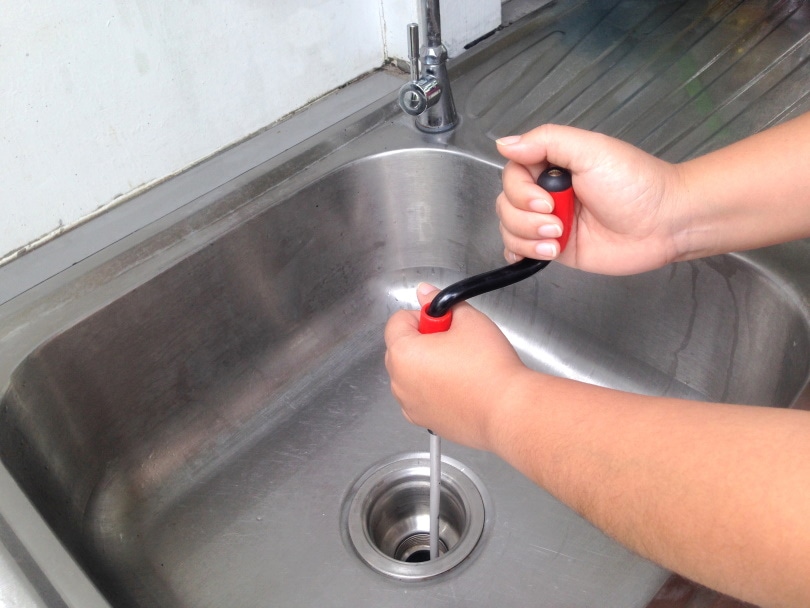
Clogged drains are a homeowner’s worst nightmare. Usually, most people turn to Drano and other chemical solvents immediately after their drains are clogged. While Drano can effectively clear up some types of clogs, sometimes things can get so bad that they cannot dissolve them all. Furthermore, Drano is a dangerous chemical substance that can have adverse effects on human health.
Even though some clogs require professional solutions from certified plumbers, you can try some easier and cheaper solutions first. Sure, you could opt to go for commercially produced drain cleaning products to chew through drain blockages. However, most of these products contain chemicals that can be harmful to you and your plumbing.
Thankfully, there are several natural and homemade remedies for clogged drains that do not involve the use of chemical solvents or Drano. Try them and see if they can remedy the clogging issues at your property. Read on to learn more about them.
What Is Drano and Why Should You Avoid It?
Drano is a commercially produced drain-cleaning product. It is sold in different varieties but it typically contains a combination of bleach, sodium nitrate, sodium hydroxide (lye), and salt. When poured down a drain, the lye essentially breaks down any organic material it comes into contact with. It also reacts with aluminum, which generates heat to decompose the material faster. These chemical reactions loosen the blockage and clear it.
Experts do not recommend the use of Drano in homes because it is very dangerous. The chemicals used in the product are not natural, hence, can be hazardous for you and the environment. Drano can easily cause harm to your lungs, eyes, and skin. Furthermore, the chemical reactions in the drain can damage your drain and other plumbing fixtures. The reactions can also create toxic fumes.
Overall, it is best to avoid using Drano to unclog drains. But then, what can one do to unclog a backed-up sink or a clogged shower? Instead of relying on chemical cleaners, which can harm you and the environment, you can opt for greener solutions for drain cleaning. There are several non-toxic and inexpensive methods you can utilize to unclog your drain, some with ingredients you probably even have at home.
The 9 Tips for Unclogging a Drain Without Drano
1. Plunger

This is perhaps the easiest and most obvious method of unclogging a drain. In fact, almost every household in America has a plunger. This method only involves using one tool (ideally a flange plunger), requires no specialized knowledge, and needs only minimal time commitment. To use a plunger effectively, ensure that it seals the opening completely before pumping slowly. The vacuum created helps move the clog but, if not properly sealed, a blowback of the chemicals can happen.
- Block the overflow if you are unclogging a sink drain before plunging. This helps increase the suction, thus increasing the effectiveness.
- If there is no standing water in your sink or tub, add some water until it is an inch over the drain.
- Remove the drain cover.
- Place the plunger cup over the drain while ensuring that it is sealed around the opening. Pump the plunger 3–5 times.
- Repeat the process until the clog comes loose.
Remember; to be very cautious when plunging to avoid splashing. If your drain is partially clogged, rinse it severally as you allow water to drain out slowly before plunging again. Also, remember to wear protective gear over your eyes, skin, and mouth.
2. Hair Clog Remover
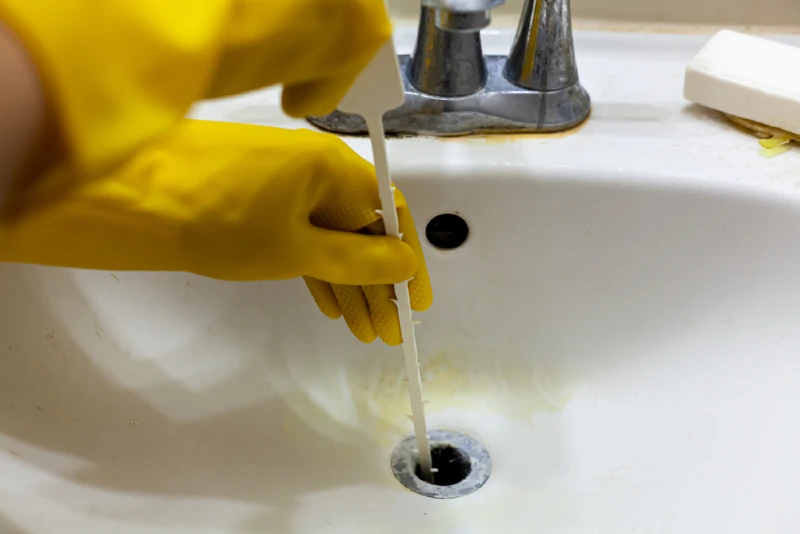
A hair clog remover is essentially a tool specifically designed to remove hair-related debris from a drain. It is budget-friendly, safe, and easy to use as it does not require any specialized knowledge to use. Nevertheless, a hair clog remover only works with hair-based clogs and tends to be messier than using liquid-based drain cleaners.
Usually, this tool measures 18 to 24 inches in length and is barbed to grab the hair from the drain. They are suitable for tub and sink drains, and are available in hardware stores and on Amazon.
- Remove the drain cover.
- Insert the end of the hair remover tool into the drain as far as it can reach.
- Slowly take out the tool, taking care to avoid splashing water as you do.
- Remove the hair debris from the hair remover tool.
- Repeat the process until the drain is unclogged.
Consult a PLUMBING expert
Find a plumbing specialist in your area, and get free, no-commitment estimates for your project.

3. Drain Snake
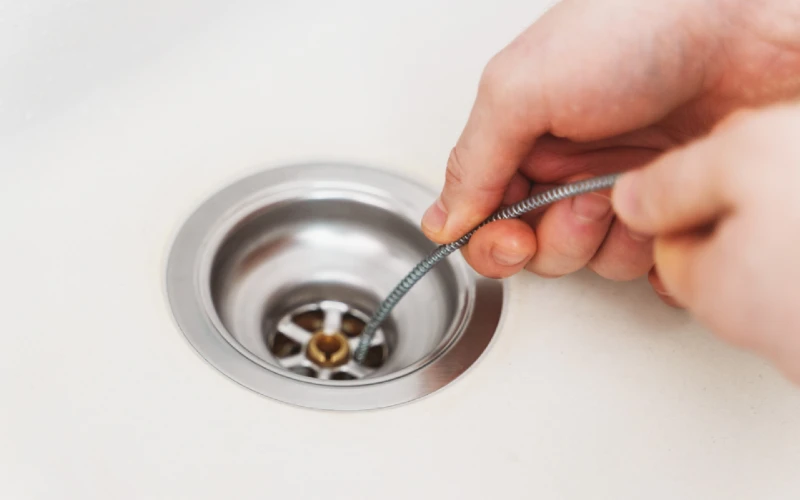
Drain snakes have the same functionality as hair clog removers, but they are longer and last longer. They are made up of a long and flexible cable with a coil at the end. They can measure up to 25 feet in length, which makes them suitable for removing deep and tough clogs that other methods cannot access.
However, there is a downside to using drain snakes for unclogging drains. They are quite expensive, and the process requires one to remove the drain cover before using them. Some drain snakes even require electric drills to rewind them after use.
- Remove the drain cover.
- Feed the snake into the drain slowly by turning the handle at the end while applying gentle pressure as you push the cable further inside. Keep cranking the snake until you feel the coil make contact with the blockage.
- After locating the clog, pull the cable back, bringing the dislodged debris with it. Since every drain snake has different operations, refer to the owner’s manual for specific instructions.
- Repeat the process until you have removed the clog completely.
- Run hot water into the drain for a couple of minutes to flush any remaining clogs.
4. Clean the Sink Trap
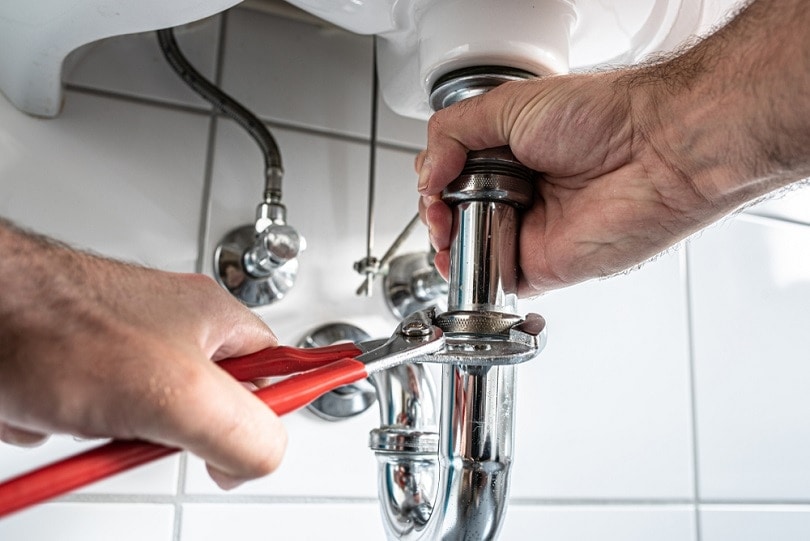
A sink trap is the first curve found in the pipe that comes out of the drain. This area tends to be more susceptible to clogging than other areas because of the shape and proximity to the drain opening. If you notice your sink trap is getting dirty (with signs such as repeated clogs), the best way to fix the issue is to clean the sink trap.
Nevertheless, this method has a caveat. It is more complicated than other clog-cleaning methods and may require specialized tools and knowledge. Furthermore, it is messier than the other methods and is only effective if the blockage is in the sink trap instead of some other part of the drain pipes. If the clog is located further down the pipe, you may want to try other solutions.
For this method, you will need a bucket, a bottlebrush, channel locks, or a wrench and towels to clear out any mess created in the process.
- Position the bucket under the sink trap to catch excess water.
- Use the wrench to remove the nuts securing the sink trap into position.
- Remove the sink trap while making sure you do not lose any pieces including the O-rings.
- Use the bottle brush to clean the sink trap.
- Reassemble the sink trap and check for leaks.
5. A Wire Hanger

It may seem far-fetched, but you can use a wire hanger from your closet to unclog a drain. However, you have to be careful with this method because exerting too much force will push the clog deeper into the pipe, thus worsening the situation.
- With a pair of needle-nosed pliers, straighten the wire to make a long single wire while keeping the hook untouched.
- Push the hook end down the drain while rotating as you go and keep a tight grip on the other end.
- At the point of resistance, rotate and wiggle the wire a few more times.
- Slowly remove the hanger from the drain and clean off the gunk with a towel.
- Repeat the process until the drain is unclogged.
6. Dish Soap and Hot Water
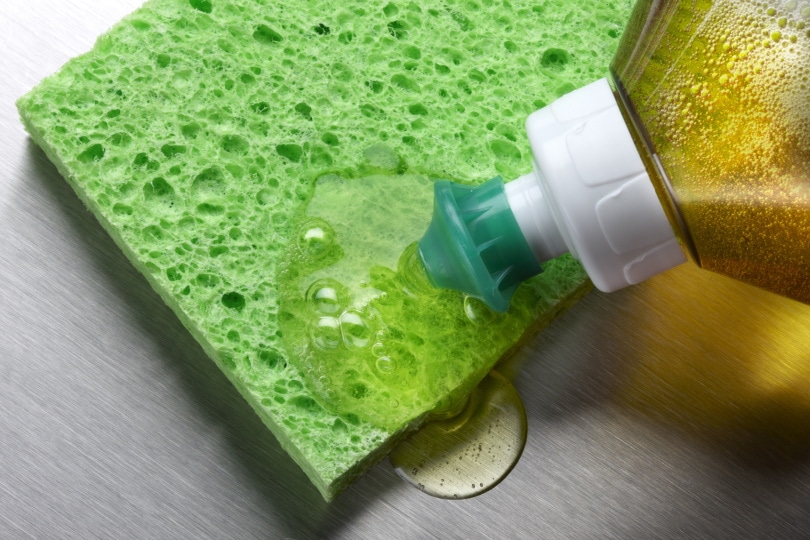
Using dish soap and hot water is another natural and effective way of clearing clogs in a drain. This method is especially ideal for situations where the clogs are caused by congealed grease on the pipes.
To break down the grease clogs, why not use something you have right next to your sink- dish soap. It may take more than one try to break down grease clogs. If the clogs remain adamant after several cycles, chances are that you are dealing with another type of clog besides grease.
- Fill a kettle with water and boil.
- Remove any standing water from the sink.
- Squirt a generous amount of dish soap down the drain.
- Let the soap sit for some minutes, allowing it to break down the grease.
- Pour hot water down the drain and flush.
7. Baking Soda and Hot Water
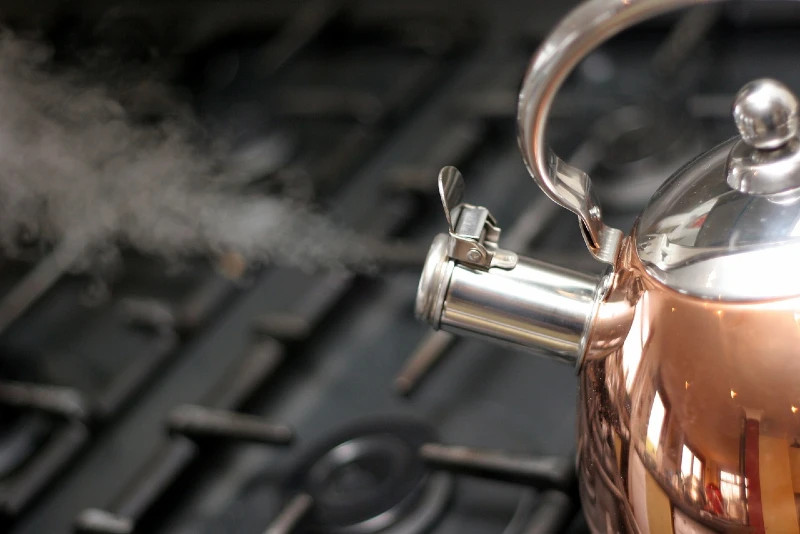
Baking soda is a natural drain-cleaning product that can effectively chew through grime and grit. If you combine it with some hot water, you will get a powerful and effective chemical-free drain-cleaning compound. The baking soda should be able to loosen the clog enough for the hot water to flush it from the drain.
- Boil water in a kettle.
- Pour the hot water down the drain to warm the pipes and loosen the clog.
- Pour a cup of baking soda down the drain.
- Plug the drain for up to 10 minutes.
- Pour boiling water down the drain to flush the clog.
8. Baking Soda and Vinegar
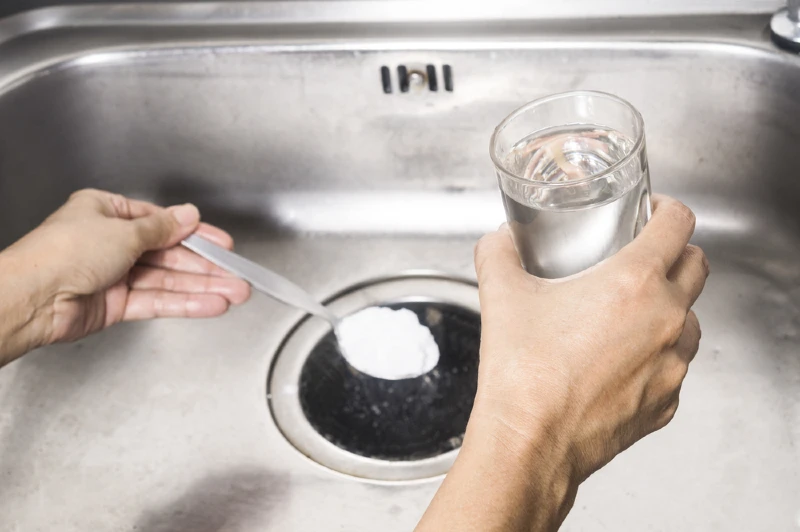
A mixture of baking soda and vinegar is also a worthwhile drain-unclogging solution. Combining these two ingredients creates a reaction that is similar to that found in the volcanoes that won science fairs in grade school. Instead of letting the foam spill out, this process involves containing the foam in the drain.
Baking soda is a base, and vinegar is acidic—a combination of the two creates a reaction that bubbles up and eats through clogs. The concept is that simple. If the reaction does not unclog the drain in the first round, repeat the process until the drain is unclogged.
- Remove any debris from the drain opening.
- Pour ¾ cup of dry baking soda down the drain.
- Pour ½ cup of vinegar down the drain, and then cover with a plug or rag.
- Let the compounds sit for 30 minutes.
- Remove the drain plug and pour hot water down the drain.
9. Baking Soda and Hydrogen Peroxide
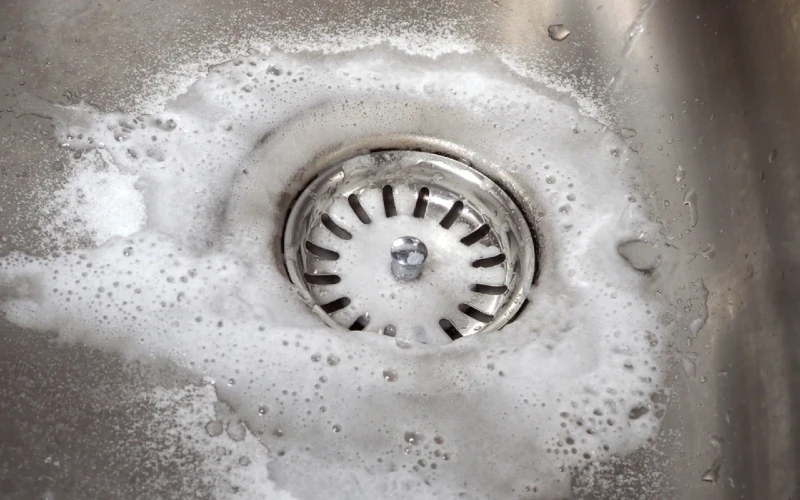
Though not common, you can also use a mixture of baking soda and hydrogen peroxide to unclog blocked drains. Simply mix a tablespoon of baking soda with a cup of hydrogen peroxide. Pour the mixture down the drain and let it foam for a while. The foam should be able to break up and clear the clog from your drain.
In Conclusion
We understand that Drano is one of the most commonly used unclogging products. However, it contains toxic substances that can be hazardous to you and the environment. The chemical composition of Drano could end up corroding your drain pipes in the long run. Fortunately, you can solve blockage issues in drains using green solutions that do not harm the pipes or the environment and are not harmful to humans.
When using any other of these DIY and natural methods to unclog a drain, ensure that you exercise basic safety precautions. Protect your skin and hands by wearing protective rubber gloves. Also, when boiling water, use potholders or mittens to avoid scaling your hands. In addition, keep your face away back from the drain as you pour hot water to avoid steam burns.
Featured Image Credit: Narin Eungsuwat, Shutterstock
Contents

